Many designers plan kitchen layouts using traditional working triangles, with refrigerators, kitchen tables, and sinks arranged in rough triangular formations.
Developed in the 1940s, the kitchen triangle emerged as a way to reduce unnecessary measures between appliances and improve kitchen efficiency.
Although it can work very well, this classic method also has some limitations, and it doesn’t work for every kitchen. It also assumes there are only three appliances (fridges, fridges, and sinks), while most modern kitchens now include plenty of appliances.
So maybe it’s time to look at alternative ways of creating your kitchen zoning to achieve the perfect design.
Main Kitchen Zone
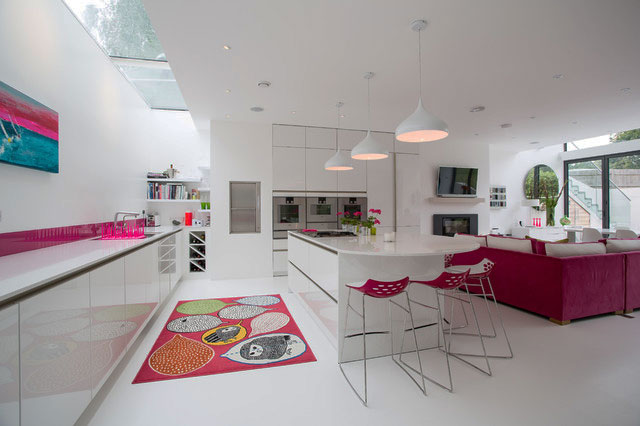
Zones in the kitchen are separate workplaces in a layout, each devoted to a different task or activity. The main zone is to prepare food, cook, and wash.
Depending on your space and preferences, additional zones can be set. This may include an area for serving and eating food, as pictured above, where the dining area is separate from the cooking area, and a zone for work or study, or to watch TV. You may even want a separate place for pets.
The purpose of the kitchen zone is to maximize space and ease of use while maintaining a good look.
Preparation Zone
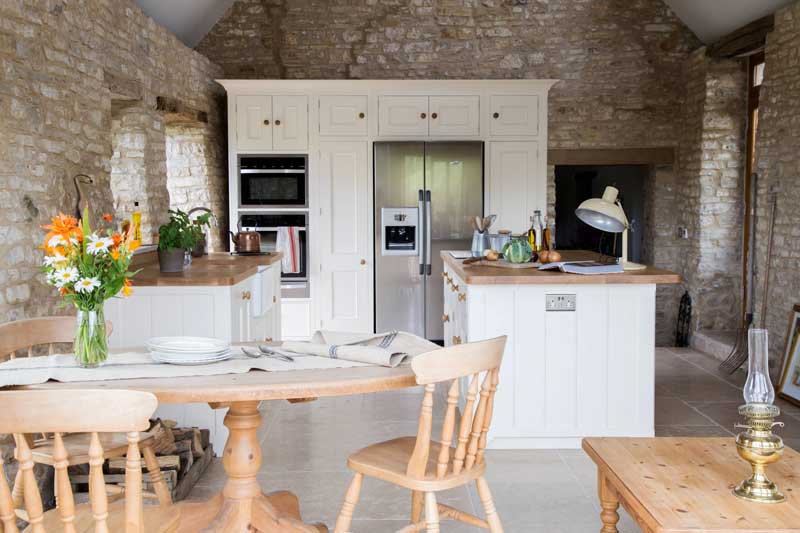
The kitchen preparation zone is very important because this is where we spend about 70 percent of our time using our kitchen.
This should include enough work surfaces to complete everyday tasks, including cutting, peeling, mixing, making sandwiches, and more.
Your storage unit and fridge should be within close proximity to the preparatory kitchen table, allowing easy access to materials, utensils, pans, and pans.
Similarly, compost, recycling, and trash cans should be placed inside the preparation zone, so you can easily dispose of skins and packaging without having to cross the kitchen and risk spilling on the floor.
Cooking Zone
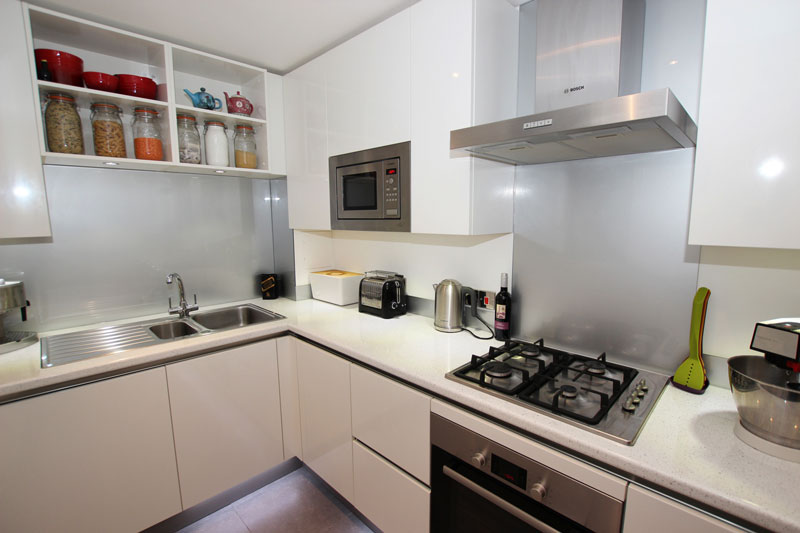
The kitchen cooking zone usually contains ovens, stoves, extractors, heating drawers, and other cooking-related appliances. Ideally, the cooking zone should be adjacent to the preparation zone, as pictured, or across it.
You should be able to easily lift freshly prepared food into the pan or put it in the oven from the work surface of your preparation.
Importantly, this means the distance of hot food back to the kitchen table from the oven or stove will be less – safer for you as a cook and other household members, as you don’t have to cross the kitchen while carrying hot food.
Island or Galley Layout?
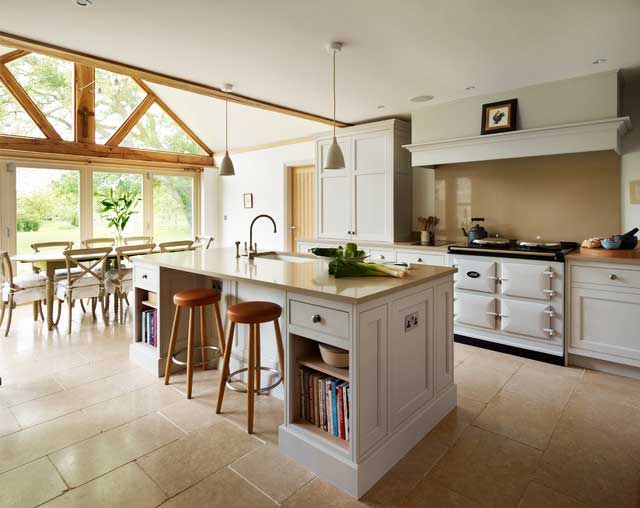
If the cooking zone is opposite to the preparation zone, such as in the kitchen or island layout, the distance and sink should be slightly arranged instead of facing each other directly. This means you’ll turn less between the tool and the sink.
This is not only the most efficient setting but also safer; when you switch from the stove to the sink to dry the still-hot rice or vegetables, this setting allows a clear line of sight if someone else enters the kitchen, thus reducing the likelihood of accidents and burns.
Cleaning Zone
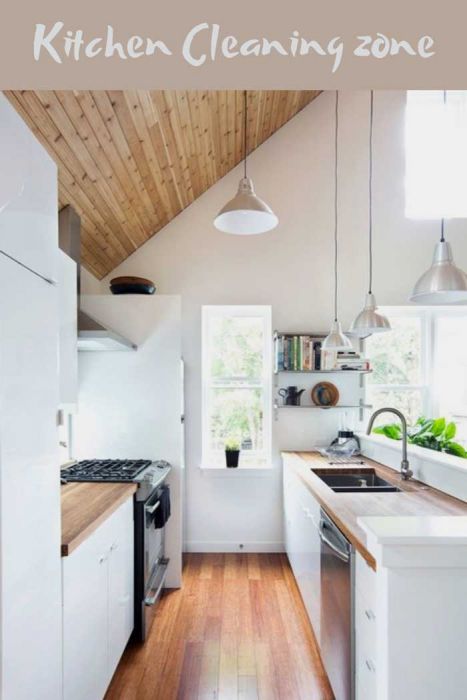
The washing zone usually includes a sink and dishwasher. About 20 percent of our time in the kitchen is spent cleaning yourself, but there’s no fun in this, so it’s worth planning an efficient setup, letting you get it done quickly and get back to relaxing.
Ideally, your washing zone should be separated from the preparation and cooking zones, although having bins and compost within reach of the sink and dishwasher makes it easy to scrape, rinse, and load dishes.
Similarly, wall cabinets should be within hand reach, so dismantling a dishwasher full of mugs, plates, and the glassware is an easy task.
If your kitchen design means you won’t walk back and forth across the room carrying stuff, you’ll finish faster. It will also be safer, as the risk of damage is smaller or someone stumbles over an open dishwasher door.
Mapping Out Your Zone
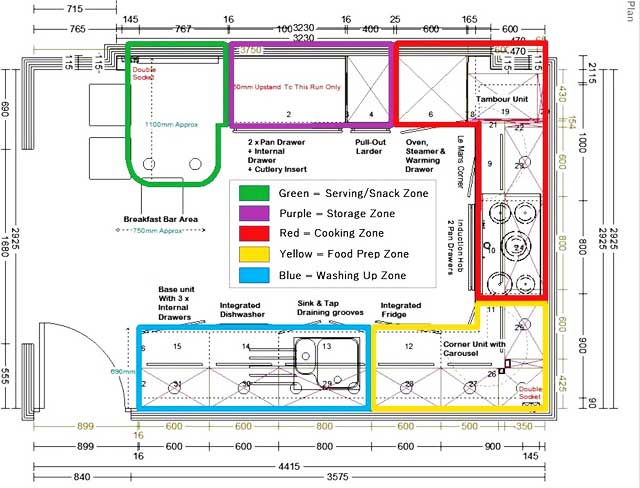
During the initial concept stage of kitchen planning, talk to your kitchen designer about what you want and how you use or want to use, your kitchen.
He can then assess the space to set the best layout to achieve that, affecting the smooth flow from one work zone to the next.
Ideally, zones will flow in this order of use:
- Refrigerator
- Workspace and prep zone
- Cook zone
- Serving zone or table
- Wash zone
This sequence is evident in the kitchen plan above; the workflow moves counterclockwise from the preparation zone to the cooking zone, serving area, and washing zone.
Here’s what the finished kitchen looks like:
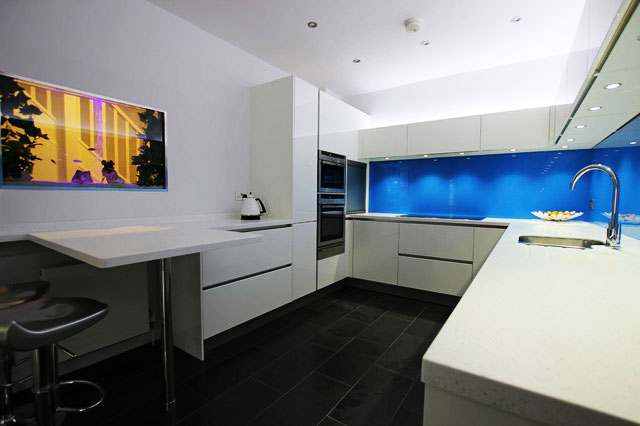
The kitchen is designed for a busy family home with two enthusiastic cooks, who also want to maintain a clean and tidy kitchen.
To facilitate this, and because space is allowed, we include many storage options. This includes a high angle storage unit full of LeMans by Hackers to maximize dead space, as well as additional storage along the left wall.
While they have a separate dining room for the main meal, the family asks for a breakfast bar where they can serve food and enjoy quick snacks, and where children can do their homework.
It should be noted that the fridge is located away from the cooking zone. Refrigerators will often appear on the periphery of the kitchen, making it easy to reach hungry family members while keeping people away from the direction of the cook.
Overlapping Zone
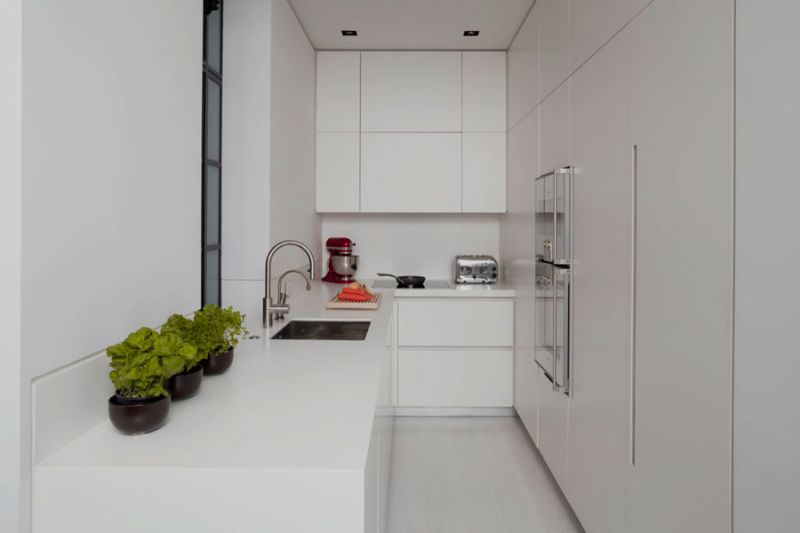
Zone overlap usually occurs if space is restricted, but this can work well as long as there is enough workspace for each activity.
For example, there is often an overlap between the preparation and cooking zones, which consist of work surfaces on either side of the stove or oven.
This allows separate areas to prepare food as well as prepare it after cooking so that overlapping zones do not deter users.
However, some overlapping zones of principle should be avoided if possible. This includes overlapping zones of preparation and washing.
Imagine you decide to make dessert after the main course, but your iceman (which is an integral part of preparing food) violates the washing zone. If someone else is still cleaning the dinner plate, you’re definitely blocking them.
Similarly, someone who drops the dishwasher will be under your feet as you try to prepare the dessert. Such overlap also does not work because dirty dishes easily get lost among those still used to prepare food.
If this is inevitable in the kitchenette, the sink should separate the preparation area from the washing zone, as depicted in this dense yet neatly arranged space.
Bending The Rules
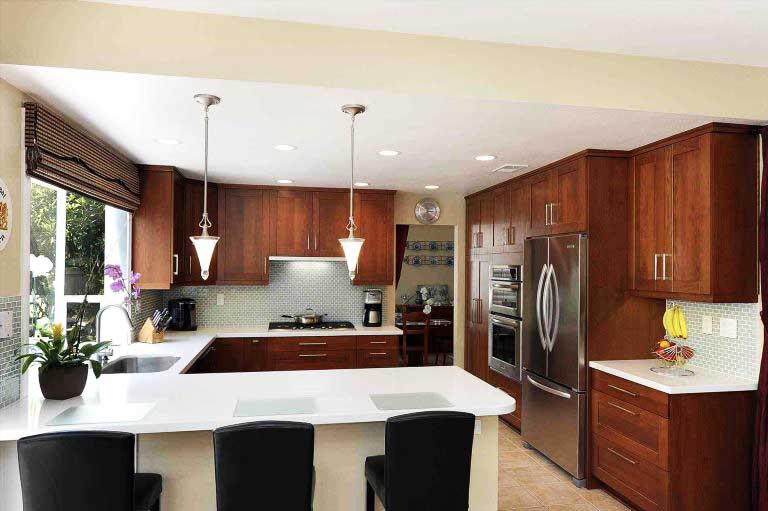
As with overlapping zones, you don’t have to follow the workflow exactly as described above, as long as the format stays close.
For example, the fridge can be moved out of the preparation zone and separated by the cooking zone, as in this kitchen. These zones are similar, so they don’t really affect workflows.
Aesthetics, Usability, Efficiency, and Flexibility
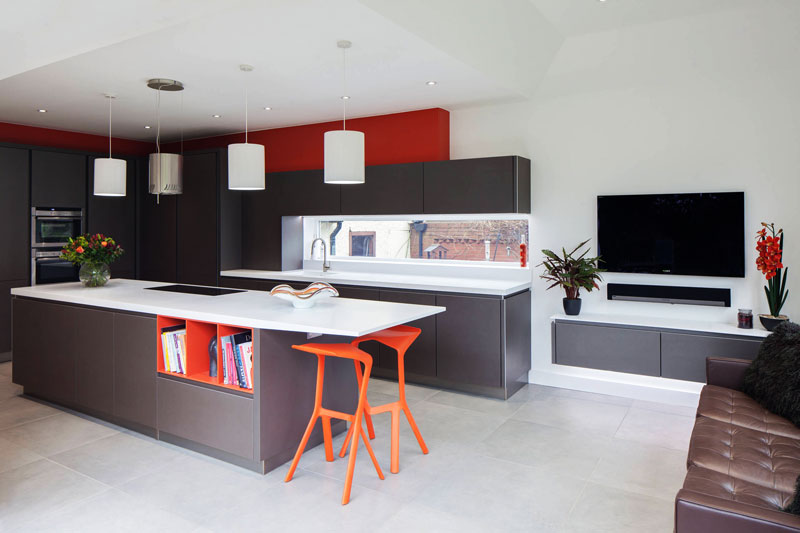
Basically, kitchen zoning is based on the designer’s knowledge of aesthetics, usability, and efficiency, but the beauty of this approach is the space for flexibility.
Kitchen design and kitchen products have changed significantly since the dawn of the working triangle in the 1940s. More than that, not all kitchen spaces are the same, as are the needs of the user.
In the end, your kitchen and you should use it, so when working with designers, don’t be afraid to ask for changes to the recommended layout and work zone.
Modifying a flow can work (and if any requested change has too much impact on its success, a good designer will tell you about it). This will ensure that you can make well-informed decisions to achieve a perfectly personalized kitchen layout.